NIL
Top LSU Wide Receiver Recruit Joins adidas NIL Roster
With one more season of high school football ahead for the LSU-committed Tristen Keys, the top wide receiver recruit in the 2026 class is joining a new team off the field. The Hattiesburg, Miss.-native has signed a NIL partnership with adidas, as the latest top prospect on the brand’s growing high school football roster. Keys […]
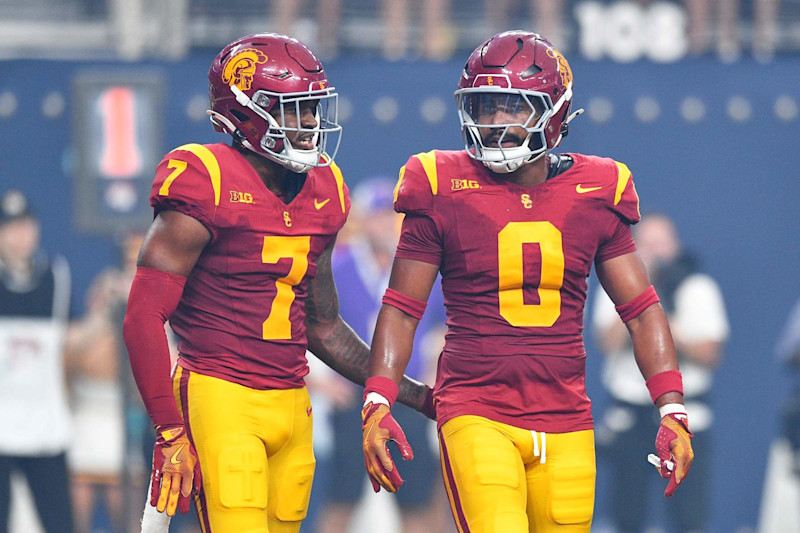


With one more season of high school football ahead for the LSU-committed Tristen Keys, the top wide receiver recruit in the 2026 class is joining a new team off the field. The Hattiesburg, Miss.-native has signed a NIL partnership with adidas, as the latest top prospect on the brand’s growing high school football roster.
Keys is the newest signing for adidas, who counts fellow top receiver recruits Chris Henry Jr. and Kayden Dixon-Wyatt as NIL endorsers. The German-based sports brand recently signed Nebraska quarterback Dylan Raiola and top NFL Draft picks Travis Hunter – who joined the brand ahead of winning the 2024 Heisman Trophy – Abdul Carter, Jalon Walker, Shemar Stewart and Emeka Egbuka, among others to their roster.
The brand announced their partnership in a collab post on Instagram with Keys, with the message “Don’t blink or you’ll miss the future. Welcome to the three stripes.”
The 6’3″ pass catcher hauled in 58 receptions for 1,275 yards and 14 touchdowns as a junior and although he committed to LSU in March, has visited Miami with trips to Alabama and Tennessee still to come.
Keys is poised to be next in line as adidas’ star wide reciever, following in the footsteps of Lions’ Amon-Ra St. Brown, Jets’ Garrett Wilson and Bears’ Rome Odunze, among others. Additional star NFL players wearing three stripes include Patrick Mahomes of the Chiefs, Micah Parsons of the Cowboys and Brock Purdy of the 49ers.
If Keys ultimately attends LSU, he won’t be able to wear adidas cleats on-field for the Tigers – who are sponsored by Nike – but can support the brand via social media and additional off-the-field marketing opportunities.
NIL
Wisconsin basketball staffer Marc VandeWettering named general manager
Wisconsin basketball announced the promotion of former chief of staff Marc VandeWettering to general manager on Monday. VandeWettering, who served as the program’s chief of staff since 2023-24 and director of basketball operations since 2017, will now inherit recruiting, roster management, player personnel and revenue sharing strategy responsibilities as the Badgers’ general manager. “I’m extremely […]
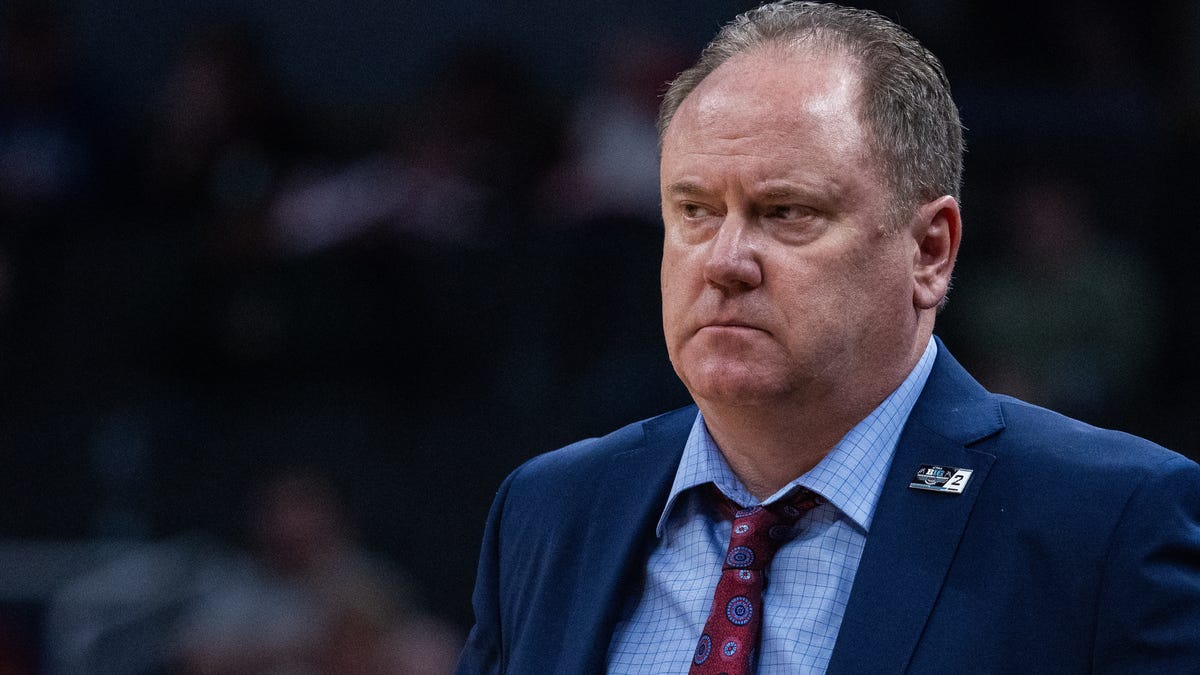
Wisconsin basketball announced the promotion of former chief of staff Marc VandeWettering to general manager on Monday.
VandeWettering, who served as the program’s chief of staff since 2023-24 and director of basketball operations since 2017, will now inherit recruiting, roster management, player personnel and revenue sharing strategy responsibilities as the Badgers’ general manager.
“I’m extremely happy for Marc and our program,” head coach Greg Gard told UWBadgers.com. “He has worked tirelessly to make us better every day and has helped us navigate this new era of college basketball very successfully. Marc has been a central figure in our evolution as a program and has already been handling many of the personnel tasks for the last couple years. Looking to the future, I’m excited to have Marc officially elevated to this administrative role and know that he will help drive our sustained success.”
VandeWettering’s new opportunity arrives at an inflection point across the entirety of collegiate athletics, not just basketball. The introduction of NIL, coupled with transfer portal windows, has transformed a college general manager into a professional roster builder.
This offseason, the Badgers addressed departures of John Tonje, five-year veteran Steven Crowl, starting guard Max Klesmit and bench assets Kamari McGee, Carter Gilmore and Xavier Amos with a bevy of transfer portal additions. Transfers Nick Boyd (San Diego State), Andrew Rohde (Virginia), Austin Rapp (Portland), Braeden Carrington (Tulsa) and Elijah Gray (Tulane) will now suit up for UW during the 2025-26 slate.
While it has existed since 2018, the NCAA installed uniform transfer portal rules across several sports in 2021. The movement of players and the financial opportunities that come with them make recruiting and roster management all the more important.
VandeWettering’s long history alongside Gard is a promising sign for Badger enthusiasts invested in the future of the program. If the two share the same vision, player acquisitions and roster movement could flow all the more seamlessly.
UW opens the 2025-26 season with an exhibition against the Oklahoma Sooners at the Kohl Center.
Contact/Follow @TheBadgersWire on X (formerly Twitter) and like our page on Facebook to follow ongoing coverage of Wisconsin Badgers news, notes and opinion
NIL
Johnny Manziel: With NIL I would have stayed in college, made more than I made in the NFL
Former Browns quarterback Johnny Manziel made around $8 million in his NFL career, but he thinks that would have been dwarfed by what he could have made in college if he had played when players were allowed to make money off their names, images and likenesses. Manziel, who became the first freshman to win the […]
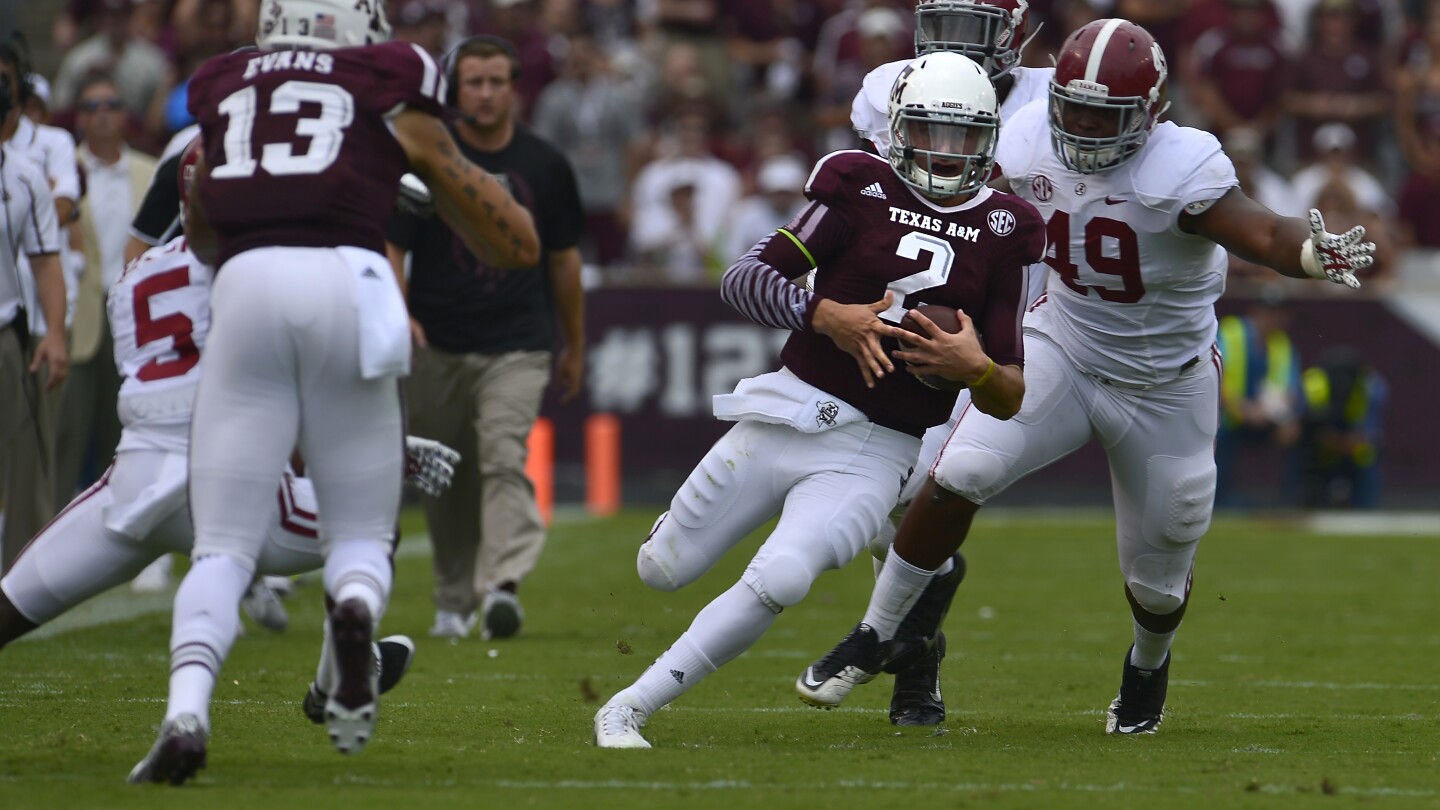
Former Browns quarterback Johnny Manziel made around $8 million in his NFL career, but he thinks that would have been dwarfed by what he could have made in college if he had played when players were allowed to make money off their names, images and likenesses.
Manziel, who became the first freshman to win the Heisman Trophy in 2012 at Texas A&M, said in an interview with Greg McElroy that the NIL money for a high-profile player like him would have been substantially more than he made as the 22nd overall pick of the Browns in 2014.
“I would’ve taken a pay cut had I gone to the NFL,” Manziel said.
Manziel entered the NFL draft with two years of NCAA eligibility remaining, and he says there’s no way he would have done that if he’d been allowed to make money off his name.
“I think no matter what, being in the NIL era, if that would have been the equivalent of 2013, I would have stayed no matter what,” Manziel said. “Just because a couple million bucks in College Station goes a really, really long way. And, you go to the NFL, you’re a first round pick you sign for $10 million or whatever it is, that’s the two years that I had remaining at Texas A&M, to be able to make through NIL. So I think, for me, when I think back about it now, I definitely, if there would have been any real money involved, I definitely would have stayed no matter what.”
Manziel was forced to sit out the first half of one game at Texas A&M after an NCAA investigation into whether he had taken money to sign autographs. But the kind of money players were getting investigated for a decade ago was chump change compared to what starting quarterbacks at major football schools are getting paid legally now.
“You can be a four-year starter in the NIL world and set yourself up really, really nice whether you go to the next level or not,” Manziel said.
NIL has made football a different world, both because college players are getting rich, and because it’s viable financially for college players to stay in college if they’re not going to be a top pick in the NFL.
NIL
NIL Collectives’ Fate Hinges on Interpretation of House Settlement
The House settlement was supposed to bring clarity and calm to big-time college sports, but attorneys who negotiated the deal already disagree on what it means for NIL collectives. The disagreement won’t imperil the multibillion-dollar truce, but it’s an early test of an arrangement crafted by attorneys who may have agreed on language but not on what […]

The House settlement was supposed to bring clarity and calm to big-time college sports, but attorneys who negotiated the deal already disagree on what it means for NIL collectives.
The disagreement won’t imperil the multibillion-dollar truce, but it’s an early test of an arrangement crafted by attorneys who may have agreed on language but not on what the words mean.
Last Friday, Yahoo Sports reported on attorneys Jeffrey Kessler and Steve Berman—the duo representing the plaintiff athletes and class members—sending a letter to the NCAA and power conferences demanding retraction of a guidance issued last Thursday by the College Sports Commission (CSC). As Sportico detailed, the guidance clarified that an entity whose purpose is to pay athletes or colleges rather than to sell goods and services to the general public likely won’t satisfy a House settlement requirement that the payor of an NIL deal worth at least $600 use the athlete’s NIL for a valid business purpose.
The letter stated that the purpose of the requirement is to prohibit NIL collectives from “simply receiving donations and paying athletes for pay,” not to prevent them from paying athletes for use of their NIL such as to appear at a golf tournament or attend an autograph signing. The letter demands that the CSC “clarifies that the valid business purpose requirement applies to NIL collectives in the same manner as any other entity.”
At the heart of the debate is interpretative disagreement about NCAA Bylaw 22.1.3, which governs the involvement of so-called associated entities in NIL deals.
As U.S. District Judge Claudia Wilken explained in her June 6 order granting final approval to the settlement, an associated entity “is one that is closely affiliated with an NCAA member school for the purpose of promoting the school’s athletics program or its student-athletes.”
In the pre-NIL era, entities closely affiliated with a school’s athletics program were sometimes labeled “representatives of an institution’s athletics interests” or “third-party entities that promote an athletics program.” Those terms include boosters who try to recruit athletes to attend a particular college. Boosters are still around and sometimes run afoul of NCAA rules by paying or otherwise providing benefits to recruits as inducements to attend a college. Boosters have been known to act as proxies for coaches, who accept NCAA rules prohibiting them from inducing recruits via compensation.
Associated entities is a phrase that includes NIL collectives, which perform similar functions as boosters but under the guise of NIL. Collectives are groups formed by boosters and other supporters of an athletic program for the purpose of collecting or pooling money to facilitate NIL opportunities for athletes. Some collectives have arranged for “NIL deals” where recruits are only be paid if they matriculate to a particular school. Those types of deals resemble pay-for-play arrangements, which the NCAA continues to prohibit, since they’re designed to incentivize an athlete to commit to a school.
Inducing an athlete to attend a college performs a different function from the intent of NIL, which draws from the right of publicity. This right forbids misappropriation of the unique and marketable qualities of a person.
When Ed O’Bannon sued over NIL, it was so that college athletes could be compensated for their likenesses appearing in video games—just like NBA, NFL, MLB and NHL players are compensated for the same usage. When a professional athlete is paid to endorse a shoe company in a TV commercial or to influence a brand on social media, that too is use of NIL. A company is paying the athlete to promote a product or service the company is selling to the public in hopes of securing a profit.
Back to NCAA Bylaw 22.1.3. It requires a valid business purpose “related to the promotion or endorsement of goods or services provided to the general public for profit.” This language is designed to ensure that the payment reflects use of the athlete’s NIL to promote the sale of “something” that the public buys.
The bylaw also requires “compensation at rates and terms commensurate with compensation paid to similarly situated individuals.” If a collective pays a recruit 10 times what a comparable endorser would normally be paid for the same activity, that’s a sign the payment is more pay-for-play than NIL.
The CSC’s guidance says that a valid business purpose for an NIL deal must involve an entity that is providing goods or services to the public for profit. This standard means that even if a collective pays an athlete to appear at a golf tournament or autograph show, paying the athlete (or other athletes) a share of the entrance fees is problematic, because the money collected would be intended to pay the athlete(s) and not sell a product or service to the public. The Kessler and Berman letter refutes this interpretation, arguing the settlement does not preclude a collective from paying athletes for use of their NIL in the entrance fee situation and related contexts.
There are several ways the situation could play out. The CSC could alter its guidance to conform more to Kessler and Berman’s wishes, and the NCAA could modify 22.1.3 for the same purpose. The parties could ask U.S. Magistrate Judge Nathanael Cousins, who Wilken designated to oversee implementation of the settlement, to consider the dueling arguments and issue an order. Meanwhile, athletes and NIL collectives whose deals are rejected by the CSC could commence their own litigation. They could bring federal antitrust and state NIL statute claims, though those claims could face sizable hurdles. Alternatively, collectives could alter their structures so the sale of products and services to the public is a core part of their missions. Others could fold as athletic departments offer to share revenue with recruits.
In theory, one or more of the settlement parties could petition Wilken to terminate the settlement on grounds the parties incorrectly believed they had a meeting of the minds. If that sounds far-fetched, it’s because it is. Wilken would point out the parties negotiated the settlement for more than a year and had ample opportunity to clarify what words meant.
Many thousands of athletes, parents, college administrators and others have also relied on the settlement in making important life decisions. To unwind the settlement because of textual ambiguity could cause sizable harm.
There’s also something called money. The settlement has a lot of it. There’s the $2.8 billion damages payout to D-I athletes in reflection of lost NIL, video game and broadcasting opportunities. There’s the revenue share of up to 22% of the average power conference athletic media, ticket and sponsorship revenue. And just last Friday, Wilken approved class counsel’s petition for $515.2 million in fees, plus $9.4 million in litigation expense and court costs. It’s hard to envision the deal collapsing with so much money on the line.
NIL collectives may be important industry players, but don’t expect the settlement to blow up over their fate.
NIL
Deion Sanders sparks debate on college football uniforms
Deion Sanders has no shortage of opinions when it comes to the future of college football. But last week at Big 12 Media Days, Coach Prime made it clear he believes the sport has let certain standards slip — starting with the uniforms. “I’m sick of the biker shorts,” Sanders said bluntly during his media […]

Deion Sanders has no shortage of opinions when it comes to the future of college football.
But last week at Big 12 Media Days, Coach Prime made it clear he believes the sport has let certain standards slip — starting with the uniforms.
“I’m sick of the biker shorts,” Sanders said bluntly during his media availability. “We’ve got guys in biker shorts, no knee pads, pants halfway up their thighs — and we’re allowing that?”
Coach didn’t stop there. He’s calling for fines for players who don’t wear their uniforms properly. It’s a move that reflects how Sanders believes college football should start mirroring the accountability structure of the NFL.
“I think there should be a fine implemented for that stuff,” Sanders said. “Let’s have more respect for this tremendous game.”
NFL standards in a college locker room
Coach Prime is no stranger to enforcing discipline. At Colorado, players are required to wear their pants to the knee — whether it’s practice or game day. There’s no wiggle room on that.
And while Sanders is known for letting players show personality — everything from gold cleats to social media handles on practice jerseys — he draws the line when it comes to honoring the game’s tradition through uniform standards.
“I played this game at a high level,” Sanders said. “I’ve been through the fines. I’ve been in that league. It’s about pride in how you carry yourself.”
In his mind, college athletes should be held to a higher standard — especially now that many are earning significant income through name, image, and likeness (NIL) deals.
“If you’re getting paid, you should be held accountable like a pro,” he said.
An unlikely battleground: Pants
To many, it may seem like a minor issue. But uniform violations have become a growing frustration among longtime coaches.
Sanders is far from the only coach who’s noticed the shift. But he might be the only one calling for an actual enforcement.
Currently, NCAA rules technically require players to wear full uniforms, including knee pads. But the enforcement is almost nonexistent.
Unlike the NFL, there are no uniform inspectors issuing fines or pulling players aside.
Sanders believes that’s part of the problem.
“You throw a flag, it’s whatever,” he said. “But hit them with a fine? Watch how quick they fix it.”
A bigger vision for the game
The uniform discussion is just one piece of a much larger picture for Sanders. Throughout the offseason, he’s advocated for a salary cap system in college football.
“I wish there was a cap,” Sanders said. “Top-of-the-line players make this much. If you’re not that guy, you know you’re not getting that. That’s how the NFL does it.”
If you can remember back in March, he also pushed the NCAA to allow joint practices between schools — a staple of NFL training camps — and was denied.
It’s clear he’s trying to reshape the game in a way that blends tradition, NFL professionalism, and player development.
Fall camp begins July 28
Colorado opens training camp in two weeks and kicks off the 2025 season on August 29 against Georgia Tech in Boulder.
While the Buffs continue to chase improvement on the field after last year’s 9-4 campaign, the tone off the field has been set.
Expect clean, full-length pants on game day — because in Boulder, that’s not optional.
— Want more stories like this? Follow us on X for all things Colorado Football and Basketball.
NIL
Lane Kiffin said what every coach is thinking about NIL and salary caps at SEC Media Days
Ole Miss Rebel Head Coach, Lane Kiffin, was one of the first coaches to speak at the 2025 SEC Media Days in Atlanta, GA. Lane Kiffin in now entering his 6th season as the Rebels head coach and has led the team to three ten-plus win seasons in that time span. As he is accustomed […]

Ole Miss Rebel Head Coach, Lane Kiffin, was one of the first coaches to speak at the 2025 SEC Media Days in Atlanta, GA. Lane Kiffin in now entering his 6th season as the Rebels head coach and has led the team to three ten-plus win seasons in that time span. As he is accustomed to doing, he once again made a series of headline grabbing statements.
Kiffin has been one of the louder voices in the NIL space, and the Rebels have been one of the teams that have been most positively impacted by the changing landscape of college football. Kiffin has also previously signaled support for a salary cap in college football in past statements and interviews.
Today during his media day appearance, Kiffin was once again asked about a salary cap, particularly in relation to the impact of revenue sharing. The question was, “You mentioned the current cap in college sports. You’ve spoken about a salary cap before. Now that revenue sharing is underway, do you think college football should and can have a hard salary cap?”
Kiffin’s response was, “I think that’s what we attempted. Doesn’t seem like that’s working very well…That was the intention of what was going on because there were so many complaints when NIL started about, okay, everybody has different advantages, and different payrolls. Saw those a couple of years ago…So that was supposed to be being fixed, and now it’s not…So you’re not operating on a salary cap, so”
This is a notable exchange here from Kiffin. In early June a judge signed of a long awaited settlement that will allow, for the first time, schools to directly pay student athletes for the first time by sharing some of their athletic department revenue with athletes. There is a limit on how much they are allowed to share, essentially a cap.
However, the rules are still unclear on prohibiting additional payments to athletes through the use of third party entities, such as collective, that have become a staple of college athletics over the last few seasons. That is why Kiffin is saying the revenue sharing model has not created a salary cap, it has instead just created an additional avenue to pay players.
Just last week, a bipartisan group of Congressional leaders introduced a new bill aimed at creating a structured national framework for paying athletes in the NIL era.
Stay tuned here for more recaps of the Ole Miss appearances at SEC Media Days, including a full recap of Kiffin’s interview and the three Ole Miss players in attendance, Austin Simmons, Cayden Lee, and TJ Dottery.
Ole Miss Rebel Head Coach, Lane Kiffin, was one of the first coaches to speak at the 2025 SEC Media Days in Atlanta, GA. Lane Kiffin in now entering his 6th season as the Rebels head coach and has led the team to three ten-plus win seasons in that time span. As he is accustomed to doing, he once again made a series of headline grabbing statements.
Kiffin has been one of the louder voices in the NIL space, and the Rebels have been one of the teams that have been most positively impacted by the changing landscape of college football. Kiffin has also previously signaled support for a salary cap in college football in past statements and interviews.
Today during his media day appearance, Kiffin was once again asked about a salary cap, particularly in relation to the impact of revenue sharing. The question was, “You mentioned the current cap in college sports. You’ve spoken about a salary cap before. Now that revenue sharing is underway, do you think college football should and can have a hard salary cap?”
Kiffin’s response was, “I think that’s what we attempted. Doesn’t seem like that’s working very well…That was the intention of what was going on because there were so many complaints when NIL started about, okay, everybody has different advantages, and different payrolls. Saw those a couple of years ago…So that was supposed to be being fixed, and now it’s not…So you’re not operating on a salary cap, so”
This is a notable exchange here from Kiffin. In early June a judge signed of a long awaited settlement that will allow, for the first time, schools to directly pay student athletes for the first time by sharing some of their athletic department revenue with athletes. There is a limit on how much they are allowed to share, essentially a cap.
However, the rules are still unclear on prohibiting additional payments to athletes through the use of third party entities, such as collective, that have become a staple of college athletics over the last few seasons. That is why Kiffin is saying the revenue sharing model has not created a salary cap, it has instead just created an additional avenue to pay players.
Just last week, a bipartisan group of Congressional leaders introduced a new bill aimed at creating a structured national framework for paying athletes in the NIL era.
Stay tuned here for more recaps of the Ole Miss appearances at SEC Media Days, including a full recap of Kiffin’s interview and the three Ole Miss players in attendance, Austin Simmons, Cayden Lee, and TJ Dottery.
NIL
Johnny Manziel
Former Browns quarterback Johnny Manziel made around $8 million in his NFL career, but he thinks that would have been dwarfed by what he could have made in college if he had played when players were allowed to make money off their names, images and likenesses. Manziel, who became the first freshman to win the […]
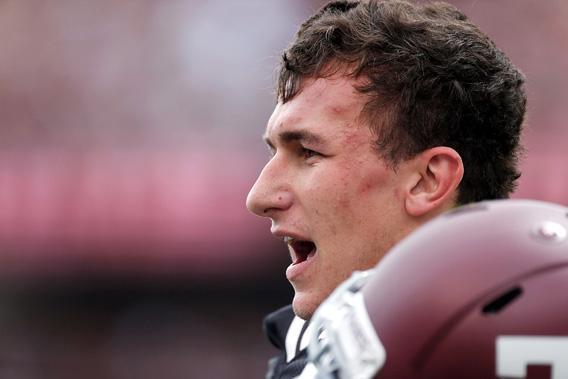
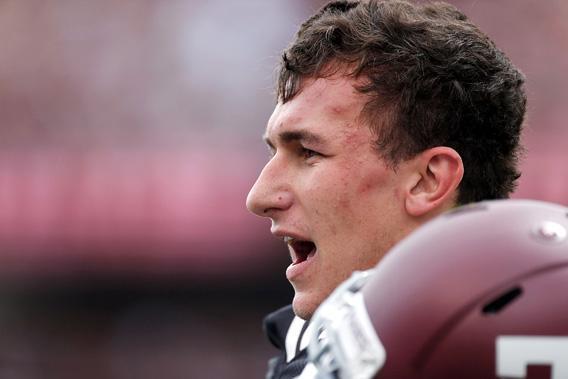

Former Browns quarterback Johnny Manziel made around $8 million in his NFL career, but he thinks that would have been dwarfed by what he could have made in college if he had played when players were allowed to make money off their names, images and likenesses.
Manziel, who became the first freshman to win the Heisman Trophy in 2012 at Texas A&M, said in an interview with Greg McElroy that the NIL money for a high-profile player like him would have been substantially more than he made as the 22nd overall pick of the Browns in 2014.
“I would’ve taken a pay cut had I gone to the NFL,” Manziel said.
Manziel entered the NFL draft with two years of NCAA eligibility remaining, and he says there’s no way he would have done that if he’d been allowed to make money off his name.
“I think no matter what, being in the NIL era, if that would have been the equivalent of 2013, I would have stayed no matter what,” Manziel said. “Just because a couple million bucks in College Station goes a really, really long way. And, you go to the NFL, you’re a first round pick you sign for $10 million or whatever it is, that’s the two years that I had remaining at Texas A&M, to be able to make through NIL. So I think, for me, when I think back about it now, I definitely, if there would have been any real money involved, I definitely would have stayed no matter what.”
Manziel was forced to sit out the first half of one game at Texas A&M after an NCAA investigation into whether he had taken money to sign autographs. But the kind of money players were getting investigated for a decade ago was chump change compared to what starting quarterbacks at major football schools are getting paid legally now.
“You can be a four-year starter in the NIL world and set yourself up really, really nice whether you go to the next level or not,” Manziel said.
NIL has made football a different world, both because college players are getting rich, and because it’s viable financially for college players to stay in college if they’re not going to be a top pick in the NFL.
-

 Technology3 weeks ago
Technology3 weeks agoPet fitness and wellness trends for a healthier and happier dog
-

 College Sports3 weeks ago
College Sports3 weeks agoWAC to Rebrand to UAC, Add Five New Members in 2026
-

 College Sports3 weeks ago
College Sports3 weeks agoA new era of Dickinson hockey begins behind the bench – The Dickinson Press
-

 Motorsports2 weeks ago
Motorsports2 weeks agoWhy Cosmetics are Making Up for Lost Time in Women’s Sports
-

 Health3 weeks ago
Health3 weeks agoFlorida assault survivor shares hope for change with new mental health law
-

 Motorsports2 weeks ago
Motorsports2 weeks agoTeam Penske names new leadership
-

 Sports3 weeks ago
Sports3 weeks agoHow to Market FAST Sports Content to New Audiences
-

 Sports6 days ago
Sports6 days agoNew 'Bosch' spin
-

 Motorsports3 weeks ago
Motorsports3 weeks agoNASCAR This Week – Patriot Publishing LLC
-

 Youtube2 weeks ago
Youtube2 weeks agoBREAKING: NBA MVP Shai Gilgeous-Alexander signs the RICHEST annual salary in league history





























